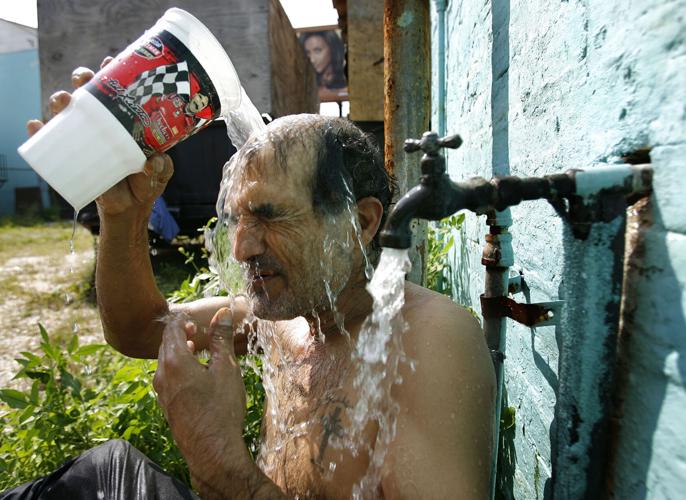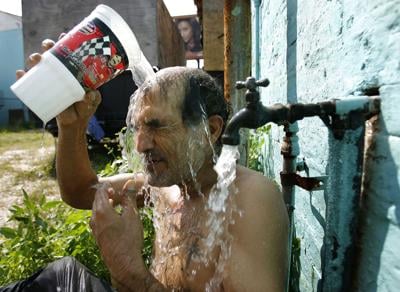You’re not imagining it. There really are more days of hard-to-bear heat than there used to be.
Cities in Louisiana are experiencing at least an extra two weeks of extremely hot days compared to 50 years ago, and in some cases as much as an additional month of brutally hot weather, according to an analysis by Climate Central, a science research and journalism organization.
Of the 242 cities nationwide that were part of the analysis, about 60% are experiencing three or more additional days of extreme heat than during the early 1970s. The cities recording the greatest increases in extremely hot days were all in the South, including the seven cities analyzed in Louisiana.

Showing the state’s largest uptick was Shreveport, which endures 31 more days above 95 degrees than it did a half-century ago. The increase in Shreveport ranked 13th among all of the cities assessed. Baton Rouge, Lake Charles and Monroe each had 22 more days with temperatures above 95, while Lafayette had 20 additional days over 95.
New Orleans had 15 more days above 95, and about 28 additional days above 90 degrees.
Alexandria came out on the somewhat cooler end, with 13 additional days of extreme heat compared to the 1970s.

Amy Keyes shelters from the sun under an umbrella as she waits at a bus stop at Lee Drive and Highland Road in Baton Rouge on July 14, 2020.
Most of the 10 U.S. cities recording the greatest increases in the number of extremely hot days were in Texas. They include San Antonio, Austin, Victoria and No. 1-ranked McAllen, a south Texas city with a whopping 68 more days over 95 degrees.
Greenhouse gas emissions from coal, gas and other fossil fuel burning is changing the chemistry of the atmosphere, causing it to warm faster than it ever has in human history. The global annual temperature has increased at an average rate of 0.13 degrees per decade since 1880 and over twice that rate since 1981, say climate scientists with the National Oceanic and Atmospheric Administration.
“It’s no surprise that global temperatures are increasing, so we would expect more days of extreme heat and more intense heat on those days,” said Ahira Sanchez-Lugo, a NOAA climatologist familiar with Climate Central’s analysis.
Extreme heat isn’t just uncomfortable — it can be dangerous. Heat is the top cause of weather-related deaths in the U.S., surpassing floods, hurricanes and tornadoes, a National Weather Service report says.

Heat-related illnesses include dehydration, heat strokes and cramping. High temperatures can also contribute to deaths from heart disease, high blood pressure, alcohol poisoning and drug overdoses.
Not everyone can just flip on the AC when the temperature rises. Homebuilders, landscapers, trash collectors and other outdoor workers have to suffer through the heat to earn a living. Poor communities tend to have fewer air conditioners or may reduce their use to manage energy bills, a recent study from the University of Southern California found.
Coronavirus-related building closures and social distancing rules have made it difficult for homeless people to shelter from the summer heat.
Temperatures can also be several degrees hotter in parts of cities with few trees and parks. These ‘heat islands’ tend to be in poorer areas, where there's often more concrete than green space.

New Orleans Sewerage & Water Board employee Renaldo Cargo, left, fills a cup as Eddie Myles, right, puts down his weed eater during break from cutting tall grass at a lot along the Washington Ave. canal on Tuesday, Aug. 13, 2019. The crew did their work on a day that the National Weather Service issued a heat advisory for the New Orleans area.
The New Orleans Health Department and the climate change reporting project ISeeChange launched a project last month to gauge temperatures around New Orleans and map its hot spots. The information could guide tree planting, park development and other localized temperature-reduction efforts.
Such measures may be important now, but even more important in the years ahead. After Florida, Louisiana is expected to see the biggest increase in the number of days in which heat and humidity produce a “feels like” temperature, also known as a heat index, of at least 105 degrees, according to a report last year by the Union of Concerned Scientists. By the end of the century, Louisianans will be sweating through three full months where the heat index hits 105 or above. That is, unless there’s a reduction in global emissions, the report says.
The bottom line: Nearly every measure of heat is going up in Louisiana.
“You can expect more heat waves that’ll get more intense, more frequent, and the duration will be greater as well,” Sanchez-Lugo said.
ROTTERDAM, The Netherlands -- Eveline Bronsdijk knew she'd done her job when the people of Rotterdam began debating whether pigs should be all…










